50 Best Colleges for Biochemistry – 2024
April 5, 2024

One might assume that all of the schools on a list of Best Colleges for Biochemistry would begin or end with “University.” After all, we typically think of large universities possessing the best labs and research facilities in the world of higher education. Yet, as you see from the list below, many of the top biochemistry schools are actually small liberal arts colleges such as Grinnell, Smith, and Wesleyan—schools where opportunities for hands-on research for undergraduates abound. Whether your goal is to work as a scientist in the pharmacological, forensics, or genetics fields, all of these colleges and universities will provide you with the knowledge and impressive credentials to launch your career.
Along the way to earning a degree in biochemistry, you’ll take courses in physical chemistry, general psychics, calculus, organic chemistry, microbiology, general chemistry, human physiology, biostatistics, genetics, and more.
Methodology
Click here to read our methodology for the Best Colleges for Biochemistry.
Best Colleges for Biochemistry
Here’s a quick preview of the first ten biochemistry institutions that made our list. Detailed profiles and stats can be found when you scroll below.
1) Princeton University
2) University of California-San Diego
3) University of Michigan
4) University of Pennsylvania
5) Bowdoin College
6) Brown University
7) University of California, Los Angeles
8) Johns Hopkins University
9) Rice University
10) Yale University
All of the schools profiled below have stellar reputations in the field of biochemistry and commit substantial resources to undergraduate education. For each of the best biochemistry colleges, College Transitions will provide you with—when available—the university’s:
We will also include a longer write-up of each college’s:
- Academic Highlights – Includes facts like student-to-faculty ratio, average class size, number of majors offered, and most popular majors.
- Professional Outcomes – Includes info on the rate of positive outcomes, companies employing alumni, and graduate school acceptances.

Princeton University
- Princeton, NJ
Academic Highlights: 39 majors are available at Princeton. Just under three-quarters of class sections have an enrollment of 19 or fewer students, and 31% have fewer than ten students. Princeton is known for its commitment to undergraduate teaching, and students consistently rate professors as accessible and helpful. The Engineering Department is widely recognized as one of the country’s best, as is the School of Public and International Affairs.
Professional Highlights: Over 95% of a typical Tiger class finds their next destination within six months of graduating. Large numbers of recent grads flock to the fields of business and engineering, health/science, & tech. Companies presently employing hundreds of Tiger alumni include Google, Goldman Sachs, Microsoft, McKinsey & Company, Morgan Stanley, IBM, and Meta. The average salary ranges from $40k (education, health care, or social services) to $100k (computer/mathematical positions). Between 15-20% of graduating Tigers head directly to graduate/professional school.
- Enrollment: 5,604 (undergraduate); 3,238 (graduate)
- Cost of Attendance: $86,700
- Median SAT: 1540
- Median ACT: 35
- Acceptance Rate: 6%
- Retention Rate: 97%
- Graduation Rate: 98%

University of California, San Diego
- San Diego, CA
Academic Highlights: There are 140+ undergraduate majors offered at UCSD, and all students join one of eight undergraduate colleges meant to forge flourishing communities within the larger university. Biology has the highest representation of all majors (19%) followed by engineering (12%), the social sciences (11%), and computer science (9%). UCSD’s computer science and engineering programs have stellar reputations in the corporate and tech communities, and programs in biology, economics, and political science are among the best anywhere.
Professional Outcomes: Employers of recent graduates included the Walt Disney Company, Tesla, NBC Universal, PwC, Northrop Grumman, and EY. More than 1,000 current Google employees are UC San Diego alumni, and Qualcomm, Amazon, and Apple all employ 500+ each. The median early career salary is $65,000 across all majors, placing the university in the top 10 public universities in the country. UCSD also fares well in measures of its return-on-investment potential.
- Enrollment: 33,096 (undergraduate); 8,386 (graduate)
- Cost of Attendance: $31,830 (in-state); $64,404 (out-of-state)
- Median SAT: Test Blind
- Median ACT: Test Blind
- Acceptance Rate: 25%
- Retention Rate: 93%
- Graduation Rate: 88%
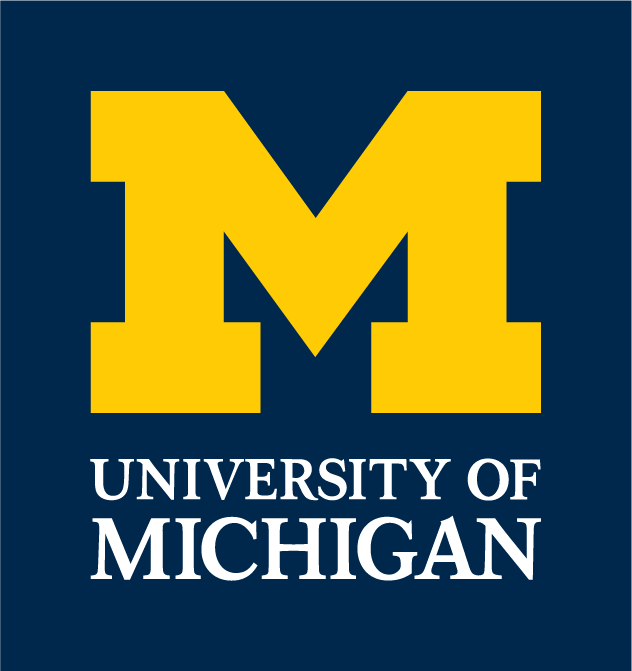
University of Michigan
- Ann Arbor, MI
Academic Highlights: There are 280+ undergraduate degree programs across fourteen schools and colleges, and the College of Literature, Science, and the Arts (LSA) enrolls the majority of students. The Ross School of Business offers highly rated programs in entrepreneurship, management, accounting, and finance. The College of Engineering is also one of the best in the country. By degrees conferred, engineering (15%), computer science (14%), and the social sciences (11%) are most popular. A solid 56% of classes have fewer than 20 students.
Professional Outcomes: Within three months of graduating, 89% of LSA grads are employed full-time or in graduate school, with healthcare, education, law, banking, research, nonprofit work, and consulting being the most popular sectors. Within three months, 99% of Ross grads are employed with a median salary of $90k. Top employers include Goldman Sachs, Deutsche Bank, EY, Morgan Stanley, PwC, Deloitte, and Amazon. Within six months, 96% of engineering grads are employed (average salary of $84k) or in grad school. General Motors, Ford, Google, Microsoft, Apple, and Meta employ the greatest number of alumni.
- Enrollment: 32,695 (undergraduate); 18,530 (graduate)
- Cost of Attendance: $35,450 (in-state); $76,294 (out-of-state)
- Median SAT: 1470
- Median ACT: 33
- Acceptance Rate: 18%
- Retention Rate: 97%
- Graduation Rate: 93%

University of Pennsylvania
- Philadelphia, PA
Academic Highlights: 90 distinct degrees are available across four schools: the College of Arts & Sciences, the College of Applied Science and Engineering, the College of Nursing, and the world-renowned Wharton School. The greatest number of students pursue degrees in business (19%), social sciences (14%), biology (11%), health sciences (9%), engineering (9%), and computer science (9%). The university boasts an exceptional 26% of courses with an enrollment under ten and 59% with an enrollment under twenty as well as multiple ways for undergrads to conduct research.
Professional Outcomes: 75% of Class of 2022 grads were employed within six months of graduating, and 18% were in graduate school. Finance attracted the highest percentage of grads (30%) followed by consulting (20%), technology (15%), and healthcare (10%). Employers hiring the greatest number of 2022 grads included JPMorgan, Boston Consulting Group, McKinsey, Bain & Company, Meta, and Goldman Sachs. The median starting salary for all graduates is $80,000. For those continuing their educational journeys, the most popular move is to remain at Penn, followed by Columbia and Harvard.
- Enrollment: 9,760 (undergraduate); 13,614 (graduate)
- Cost of Attendance: $89,028
- Median SAT: 1540
- Median ACT: 35
- Acceptance Rate: 7%
- Retention Rate: 98%
- Graduation Rate: 96%

Bowdoin College
- Brunswick, ME
Academic Highlights: Class sizes are small—64% contain fewer than twenty students—and 21% have fewer than ten students. The student-faculty ratio is 9:1. More than half of Bowdoin undergrads report interacting with a professor outside of regular class time at least once per week. The greatest percentage of degrees are conferred in the social sciences (30%), biology (13%), area/ethnic/gender studies (8%), computer science (7%), and mathematics (7%). Economics and government and legal studies are two of the more popular majors within the social sciences.
Professional Outcomes: An examination of three recent years’ worth of outcomes data reveals that one year after graduation, between 73 and 77% of recent grads have found full-time employment, and 15% have gone directly into graduate school. Of those entering graduate school, 48% were enrolled in master’s programs, 23% in PhD programs, 13% in law school, and 8% in med school. The top twenty graduate schools attended, by volume, in the last five years make an exclusive list including six Ivies along with Duke, MIT, Johns Hopkins, and Stanford.
- Enrollment: 1,915
- Cost of Attendance: $82,600
- Median SAT: 1510
- Median ACT: 34
- Acceptance Rate: 9%
- Retention Rate: 96%
- Graduation Rate: 94%
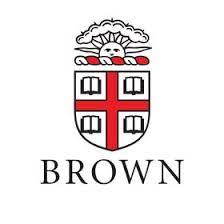
Brown University
- Providence, RI
Academic Highlights: Students must choose one of 80+ “concentration programs,” but there are no required courses. Class sizes tend to be small—68% have fewer than twenty students—and 35% are comprised of nine or fewer students. Biology, economics, computer science, mathematics, and engineering are among the most popular areas of concentration at Brown; however, it is hard to distinguish any one program, because Brown possesses outstanding offerings across so many disciplines.
Professional Outcomes: Soon after receiving their Brown diplomas, 69% of graduates enter the world of employment. Companies employing the greatest number of Brown alums include Google, Microsoft, Goldman Sachs, Amazon, Morgan Stanley, Apple, McKinsey & Company, and Bain & Company. The Class of 2022 saw 27% of graduates go directly into graduate/professional school. Right out of undergrad, Brown students boasted an exceptional 81% admission rate to med school and an 81% admission rate to law school.
- Enrollment: 7,639
- Cost of Attendance: $84,828
- Median SAT: 1530
- Median ACT: 35
- Acceptance Rate: 5%
- Retention Rate: 99%
- Graduation Rate: 96%

University of California, Los Angeles
- Los Angeles, CA
Academic Highlights: UCLA offers 125 majors in 100+ academic departments, and more than 60 majors require a capstone experience that results in the creation of a tangible product under the mentorship of faculty members. The most commonly conferred degrees are in the social sciences (25%), biology (16%), psychology (11%), mathematics (8%), and engineering (7%). Departmental rankings are high across the board, especially in computer science, engineering, film, fine and performing arts, mathematics, and political science.
Professional Outcomes: UCLA grads flow most heavily into the research, finance, computer science, and engineering sectors. High numbers of recent grads can be found at Disney, Google, EY, Teach for America, Amazon, and Oracle. Hundreds also can be found at Bloomberg, Deloitte, Mattel, Oracle, and SpaceX. The average starting salary exceeds $55,000. 16% of recent grads enrolled directly in a graduate/professional school, with other CA-based institutions like Stanford, Pepperdine, USC, Berkeley, and Loyola Marymount being the most popular.
- Enrollment: 33,040 (undergraduate); 15,010 (graduate)
- Cost of Attendance: $38,517 (in-state); $71,091 (out-of-state)
- Median SAT: Test Blind
- Median ACT: Test Blind
- Acceptance Rate: 9%
- Retention Rate: 97%
- Graduation Rate: 93%

Johns Hopkins University
- Baltimore, MD
Academic Highlights: With 53 majors as well as 51 minors, JHU excels in everything from its bread-and-butter medical-related majors to international relations and dance. Boasting an enviable 6:1 student-to-faculty ratio and with 78% of course sections possessing an enrollment under 20, face time with professors is a reality. Many departments carry a high level of clout, including biomedical engineering, chemistry, English, and international studies. Biology, neuroscience, and computer science, which happen to be the three most popular majors, can also be found at the top of the national rankings.
Professional Outcomes: The Class of 2022 saw 94% of graduates successfully land at their next destination within six months of exiting the university; 66% of graduates entered the world of employment and a robust 19% went directly to graduate/professional school. The median starting salary across all majors was $80,000 for the Class of 2022. JHU itself is the most popular choice for graduate school. The next most frequently attended institutions included Columbia, Harvard, Yale, and MIT.
- Enrollment: 6,044
- Cost of Attendance: $86,065
- Median SAT: 1540
- Median ACT: 35
- Acceptance Rate: 7%
- Retention Rate: 97%
- Graduation Rate: 95%

Rice University
- Houston, TX
Academic Highlights: Rice offers more than 50 majors across six broad disciplines: engineering, architecture, music, social science, humanities, and natural science. Programs in biology, biochemistry, cognitive science, and music are incredibly strong, while the School of Architecture and the George R. Brown School of Engineering are among the highest-ranking schools in their disciplines. One-third of computer science majors are female, almost twice the national average. Class sizes are ideally small with 66% containing fewer than 20 students and a median class size of only fourteen.
Professional Outcomes: Six months after graduation, 88% of Rice grads have found careers or a graduate school home. Companies that employ many recent grads include Deloitte, Capital One, JP Morgan Chase, Google, and Microsoft. Over one hundred alumni are also current employees of companies such as Shell, ExxonMobil, Chevron, Amazon, Accenture, and Meta. Across all majors, the average starting salary is $73k. One-third of graduates move directly into graduate or professional school, with Harvard, Yale, Stanford, MIT, Columbia, and Berkeley being the most popular destinations.
- Enrollment: 4,494 (undergraduate); 4,178 (graduate)
- Cost of Attendance: $78,278
- Median SAT: 1530
- Median SAT: 35
- Acceptance Rate: 9%
- Retention Rate: 94%
- Graduation Rate: 98%
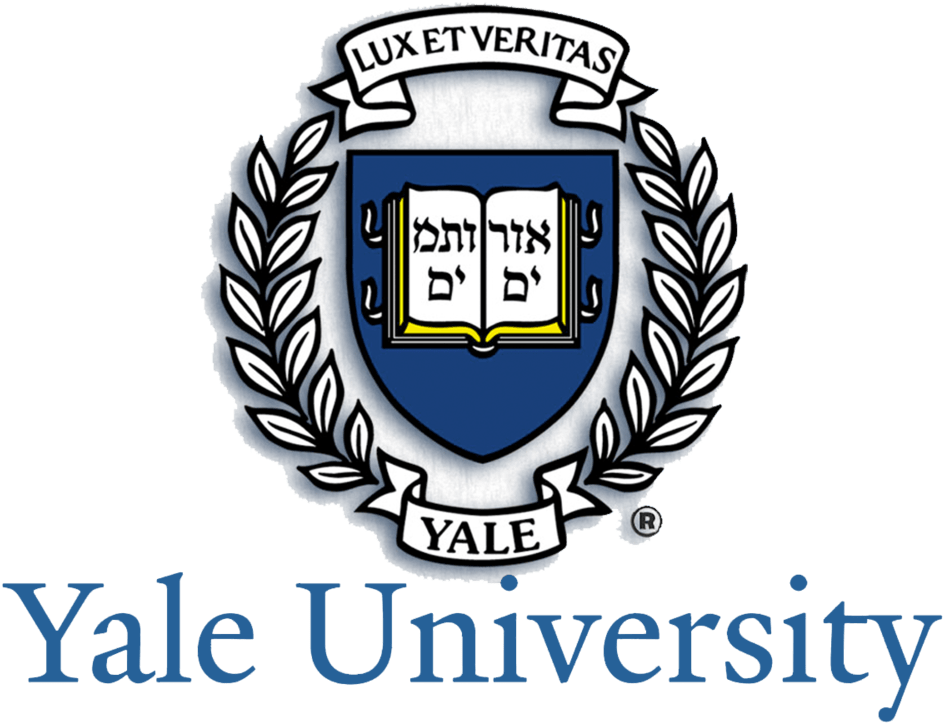
Yale University
- New Haven, CT
Academic Highlights: Yale offers 80 majors, most of which require a one- to two-semester senior capstone experience. Undergraduate research is a staple, and over 70% of classes—of which there are over 2,000 to choose from—have an enrollment of fewer than 20 students, making Yale a perfect environment for teaching and learning. Among the top departments are biology, economics, global affairs, engineering, history, and computer science. The social sciences (26%), biology (11%), mathematics (8%), and computer science (8%) are the most popular areas of concentration.
Professional Outcomes: Shortly after graduating, 73% of the Yale Class of 2022 had entered the world of employment and 18% matriculated into graduate programs. Hundreds of Yale alums can be found at each of the world’s top companies including Google, Goldman Sachs, McKinsey & Company, Morgan Stanley, and Microsoft. The most common industries entered by the newly hired were finance (20%), research/education (16%), technology (14%), and consulting (12%). The mean starting salary for last year’s grads was $81,769 ($120k for CS majors). Nearly one-fifth of students immediately pursue graduate school.
- Enrollment: 6,590 (undergraduate); 5,344 (graduate)
- Cost of Attendance: $87,705
- Median SAT: 1540
- Median ACT: 35
- Acceptance Rate: 5%
- Retention Rate: 98%
- Graduation Rate: 98%
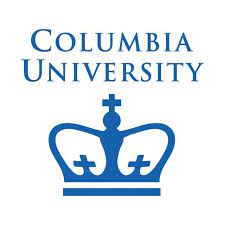
Columbia University
- New York, NY
Academic Highlights: Columbia offers 100+ unique areas of undergraduate study as well as a number of pre-professional and accelerated graduate programs. Class sizes at Columbia are reasonably small and the student-to-faculty ratio is favorable; however, in 2022, it was revealed that the university had been submitting faulty data in this area. It is presently believed that 58% of undergraduate courses enroll 19 or fewer students. The greatest number of degrees are conferred in the social sciences (22%), computer science (15%), engineering (14%), and biology (7%).
Professional Outcomes: Examining the most recent graduates from Columbia College and the Fu Foundation School of Engineering & Applied Science, 73% had found employment within six months, and 20% had entered graduate school. The median starting salary for graduates of Columbia College/Columbia Engineering is above $80,000. Many graduates get hired by the likes of Amazon, Goldman Sachs, Morgan Stanley, Google, Citi, McKinsey, and Microsoft.
- Enrollment: 8,832
- Cost of Attendance: $89,587
- Median SAT: 1540
- Median ACT: 35
- Acceptance Rate: 4%
- Retention Rate: 98%
- Graduation Rate: 95%
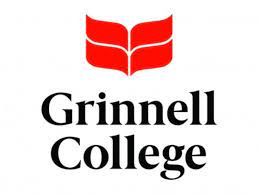
Grinnell College
- Grinnell, IA
Academic Highlights: Grinnell offers 42 areas of study and over 500 courses each semester. Thanks to a 9:1 student/faculty ratio and no competition from graduate students, 64% of classes have fewer than twenty students, and roughly one-quarter of sections have single-digit student enrollments. A top producer of PhDs in both the sciences and the social sciences, Grinnell has strong offerings in biology, chemistry, physics, economics, and history. The largest number of degrees are conferred in the social sciences, foreign languages, biology, and computer science.
Professional Outcomes: Upon graduation, 62% of Grinnell students head into the workforce, 26% to graduate school, 2% to postgraduate service, and 2% earned fellowships. Multiple recent grads accepted positions with JPMorgan, Epic, and Google. The mean salary of those employed was roughly $64,397. Close to 40% of those entering graduate school pursue PhDs or master’s degrees in the hard sciences, 8% head to law school, and 3% were bound for medical school; 88% of all applicants were accepted into their first or second choice program.
- Enrollment: 1,759
- Cost of Attendance: $82,890
- Median SAT: 1460
- Median ACT: 33
- Acceptance Rate: 11%
- Retention Rate: 93%
- Graduation Rate: 88%
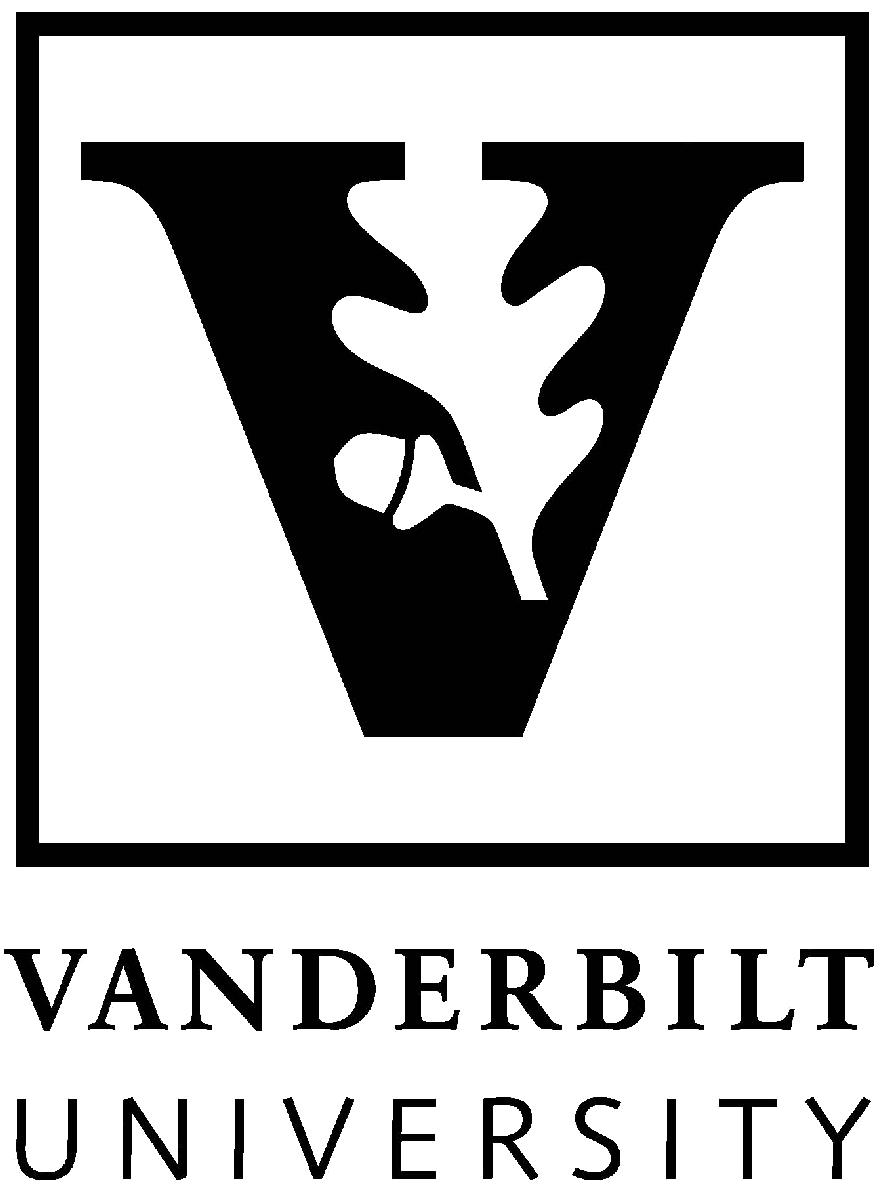
Vanderbilt University
- Nashville, TN
Academic Highlights: Four of Vandy’s ten schools cater to undergrads: the College of Arts and Sciences, the Blair School of Music, the Peabody College of Education and Human Development, and the School of Engineering. In the 2022-23 school year, 87% of course sections contained 19 or fewer students. Of the 70 undergraduate majors, economics, politics and government, and neuroscience are the most popular. The School of Engineering has a strong national reputation as do offerings in biology, economics, education, and music.
Professional Outcomes: Six months after graduating, 96% of the Class of 2021 were employed or in graduate school. The most commonly entered industry was finance followed by technology, consulting, education, and engineering. Alumni can be found in droves at Capital One, Goldman Sachs, Bain & Company, JP Morgan Chase, Citi, and Meta. Among 2022 alumni who directly pursued advanced degrees, the majority enrolled at Vanderbilt followed by Columbia, Harvard, Penn, NYU, and Northwestern.
- Enrollment: 7,151 (undergraduate); 6,559 (graduate)
- Cost of Attendance: $89,590
- Median SAT: 1530
- Median ACT: 35
- Acceptance Rate: 7%
- Retention Rate: 96%
- Graduation Rate: 93%
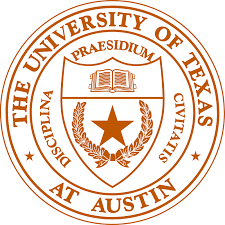
The University of Texas at Austin
- Austin, TX
Academic Highlights: UT Austin offers over 150 majors, including those at the Cockrell School of Engineering, one of the most heralded undergraduate engineering schools around, and The McCombs School of Business, which dominates in the specialty areas of accounting and marketing. The computer science department is also top-ranked. In terms of degrees conferred, engineering is tied with biology (12%) followed by communication (11%), business (11%), and the social sciences (8%). The elite Plan II Honors Program is one of the best in the country.
Professional Outcomes: Within the College of Liberal Arts, six months after graduating, 68% of Longhorns are employed and 24% have entered graduate school. The for-profit sector attracts 65% of those employed while 19% enter public sector employment and 16% pursue jobs at a nonprofit. Major corporations that employ more than 500 UT Austin grads include Google, Meta, Oracle, Microsoft, IBM, and Apple. Engineering majors took home a median income of $79k and business majors took home $70k.
- Enrollment: 41,309 (undergraduate); 11,075 (graduate)
- Cost of Attendance: $30,752-$34,174 (in-state); $61,180-$69,310 (out-of-state)
- Median SAT: 1430
- Median ACT: 32
- Acceptance Rate: 31%
- Retention Rate: 95%
- Graduation Rate: 88%

Washington University in St. Louis
- St. Louis, MO
Academic Highlights: WashU admits students into five schools, many of which offer nationally recognized programs: Arts & Sciences, the Olin School of Business, the School of Engineering & Applied Sciences, and the Art of Architecture programs housed within the Sam Fox School of Design and Visual Arts. The most commonly conferred degrees are in engineering (13%), social sciences (13%), business (13%), biology (11%), and psychology (10%). 66% of classes have fewer than 20 students, and over one-quarter have single-digit enrollments. 65% double major or pursue a minor.
Professional Outcomes: The Class of 2022 sent 52% of grads into the workforce and 28% into graduate and professional schools. Companies employing the highest number of WashU grads feature sought-after employers such as Amazon, Bain, Boeing, Deloitte, Google, IBM, Goldman Sachs, and Microsoft. Of the employed members of the Class of 2022 who reported their starting salaries, 79% made more than $60k. The universities welcoming the largest number of Bears included the prestigious institutions of Caltech, Columbia, Harvard, Penn, Princeton, and Stanford.
- Enrollment: 8,132 (undergraduate); 8,880 (graduate)
- Cost of Attendance: $83,760
- Median SAT: 1530
- Median ACT: 34
- Acceptance Rate: 11%
- Retention Rate: 96%
- Graduation Rate: 93%

Bates College
- Lewiston, ME
Academic Highlights: Thirty-four percent of courses at Bates have a single-digit enrollment, and 63% of classrooms contain nineteen or fewer students. The student-to-faculty ratio is 10:1, and not a single graduate student is present to vacuum up professorial attention. Twenty-eight percent of all degrees earned at Bates are in the social sciences, and psychology (14%), biology (13%), and the physical sciences (7%) are next in popularity. Though strong across many disciplines, Bates boasts exemplary programs in political science, art, philosophy, economics, and psychology.
Professional Outcomes: Within six months of graduation, 99% of the Class of 2022 were either employed, enrolled in graduate school, or otherwise meaningfully engaged in a fellowship or internship. The most frequently entered fields were healthcare (17%), education (16%), finance/banking (14%), and technology (7%). Within ten years of graduation, approximately 13% of Bates graduates are in, or have completed, law school whereas 7% enroll in medical school.
- Enrollment: 1,790
- Cost of Attendance: $81,382
- Median SAT: 1430
- Median ACT: 32
- Acceptance Rate: 14%
- Retention Rate: 93%
- Graduation Rate: 93%

University of Washington – Seattle
- Seattle, WA
Academic Highlights: 180+ undergraduate majors are offered across thirteen colleges/schools. Personal connections with professors abound as 55% of grads complete a faculty-mentored research project. The College of Engineering, which includes the College of Computer Science & Engineering, is one of the best in the nation; UW also boasts strong programs in everything from business to social work to environmental science. The most popular degrees are the social sciences (13%), biology (12%), computer science (11%), and business (8%).
Professional Outcomes: Within months of graduation, 73% of Class of 2022 grads were employed and 17% were continuing their education. The most popular employers of the Class of 2022 included Google, Amazon, Microsoft, Boeing, and KPMG. Across all living alumni, 6,000+ work for Microsoft, and 4000+ work for each of Boeing and Amazon. Of those headed to graduate/professional school, just over half remain in state, mostly at UW itself. Large numbers of 2022 grads also headed to Columbia, Johns Hopkins, and USC.
- Enrollment: 36,872 (undergraduate); 16,211 (graduate)
- Cost of Attendance: $34,554 (in-state); $63,906 (out-of-state)
- Median SAT: 1420
- Median ACT: 32
- Acceptance Rate: 48%
- Retention Rate: 94%
- Graduation Rate: 84%
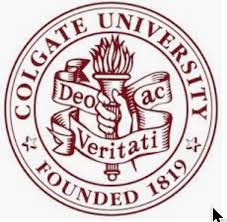
Colgate University
- Hamilton, NY
Academic Highlights: Fifty-six majors are on tap at Colgate, including all of the expected liberal arts concentrations. With a student-faculty ratio of 9:1 and an average class size of 16, Colgate undergraduates work intimately with their instructors. The social sciences account for 35% of all degrees conferred and, within that umbrella, economics, political science, and English are among the most popular and most well-regarded majors.
Professional Outcomes: Nine months after graduation, only a small number of Colgate alumni are still looking for work; in 2022, that group represented less than 2% of the graduating class. A substantial 80% had already landed full-time jobs. Employers hiring the most Colgate grads included BOA, Merrill Lynch, JP Morgan, EY, Wayfair, and the NIH. 85-95% of law school applicants are accepted into one of their target institutions. The medical school numbers were even more impressive with 100% of graduating seniors gaining acceptance into at least one med school.
- Enrollment: 3,130
- Cost of Attendance: $83,814
- Median SAT: 1470
- Median ACT: 33
- Acceptance Rate: 12%
- Retention Rate: 94%
- Graduation Rate: 91%

Tufts University
- Medford, MA
Academic Highlights: Three schools serve Tufts’ undergraduate population: the College of Arts & Sciences, the College of Engineering, and the School of the Museum of Fine Arts. The three schools combined offer more than 90 majors and minors; approximately one-third of all students double major, and half declare a minor. 15% of all courses see fewer than ten students enrolled, and 60% have sub-twenty enrollments. The most popular majors include international relations, economics, computer science, political science, and biology—all of which receive very high marks.
Professional Outcomes: Six months after earning their diplomas, 97% of 2022 graduates were employed or attending graduate school. The most commonly entered fields were finance, consulting, real estate (23%); engineering and technology (22%); health, life sciences, environmental (21%); and education, advocacy, social services (11%). Prolific employers of Tufts alums include Booz Allen Hamilton, JPMorgan, MITRE, Google, Deloitte, Amazon, Raytheon, Morgan Stanley, and BlackRock. Of the 21% of 2022 grads who went directly to graduate school, 85% were accepted into their first-choice institution.
- Enrollment: 6,815 (undergraduate); 6,616 (graduate)
- Cost of Attendance: $88,300
- Median SAT: 1500
- Median ACT: 34
- Acceptance Rate: 10%
- Retention Rate: 96%
- Graduation Rate: 94%
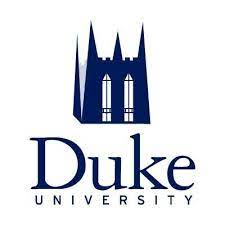
Duke University
- Durham, NC
Academic Highlights: The academic offerings at Duke include 53 majors, 52 minors, and 23 interdisciplinary certificates. Class sizes are on the small side—71% are nineteen or fewer, and almost one-quarter are less than ten. A stellar 5:1 student-to-faculty ratio helps keep classes so reasonable even while catering to five figures worth of graduate students. Computer Science is the most popular area of concentration (11%), followed by economics (10%), public policy (9%), biology (8%), and computer engineering (7%).
Professional Outcomes: At graduation, approximately 70% of Duke diploma-earners enter the world of work, 20% continue into graduate schools, and 2% start their own businesses. The industries that attract the largest percentage of Blue Devils are tech (21%), finance (15%), business (15%), healthcare (9%), and science/research (6%). Of the 20% headed into graduate school, a hefty 22% are attending medical school, 18% are in PhD programs, and 12% are entering law school. The med school acceptance rate is 85%, more than twice the national average.
- Enrollment: 6,640
- Cost of Attendance: $85,238
- SAT Range: 1490-1570
- ACT Range: 34-35
- Acceptance Rate: 6%
- Retention Rate: 98%
- Graduation Rate: 97%

Boston University
- Boston, MA
Academic Highlights: In total, the university offers more than 300 programs of study, 100+ of which are distinct undergraduate degrees spread across ten schools/colleges. Many classes at BU are reasonably small—60% contain fewer than twenty students; only 19% contain more than forty. The student-to-faculty ratio is 11:1. The greatest number of degrees are conferred in social sciences (16%), business/marketing (15%), communications and journalism (15%), biology (11%), engineering (9%), and health professions/related sciences (7%).
Professional Outcomes: Six months after graduation, 90% of BU grads have found their way into the world of employment or full-time graduate study. Across all graduating years, companies employing more than 350 BU alums include Google, Oracle, Accenture, IBM, and Amazon Web Services. Of the one-quarter of grads who move directly into graduate school, many are welcomed onto the campuses of elite graduate programs. For example, engineering students found new academic homes at MIT, Stanford, Carnegie Mellon, and Columbia.
- Enrollment: 18,459
- Cost of Attendance: $86,363
- Median SAT: 1430
- Median ACT: 32
- Acceptance Rate: 14%
- Retention Rate: 94%
- Graduation Rate: 89%

University of Wisconsin – Madison
- Madison, WI
Academic Highlights: There are 230+ undergraduate majors offered across eight schools and colleges, including the top-ranked School of Business and College of Engineering as well as the College of Letters and Science, the College of Agricultural and Life Sciences, and the Schools of Nursing, Education, Pharmacy, and Human Ecology. Undergrads can expect a mix of large and small classes, with 44% of sections enrolling fewer than 20 students. Business (18%), biology (12%), the social sciences (11%), and engineering (10%) are most popular.
Professional Outcomes: In a recent year, 46% of job-seeking grads graduated with an offer. Top employers included UW-Madison, Epic, Kohl’s, Oracle, Deloitte, and UW Health. Across all graduating years, companies employing 250+ alumni include Google, Target, Microsoft, Amazon, Apple, PwC, Accenture, and Meta. 28% of recent grads enrolled directly in graduate/professional school; the majority stayed at UW–Madison while others headed to Columbia, Northwestern, and Carnegie Mellon. The university is the top producer of Peace Corps volunteers.
- Enrollment: 37,230 (undergraduate); 12,656 (graduate)
- Cost of Attendance: $28,916 (in-state); $58,912 (out-of-state)
- Median SAT: 1440
- Median ACT: 30
- Acceptance Rate: 49%
- Retention Rate: 94%
- Graduation Rate: 89%
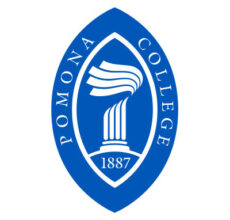
Pomona College
- Claremont, CA
Academic Highlights: There are 48 majors and minors to select from with the most popular being social sciences (23%), biology (13%), and computer science (12%). Majors in economics, international relations, chemistry, and mathematics receive especially high marks. More than 600 courses are on the menu at Pomona alone, but students can access any of the Claremont Consortium’s 2,700 courses. Pomona’s 8:1 student-to-teacher ratio leads to an average class size of only 15 students, and over 50% of the undergraduate population conduct research alongside a faculty member.
Professional Outcomes: 71% of the Class of 2022 were employed within six months of graduating. Overall, the largest number of alumni can be found at Google, Kaiser Permanente, Microsoft, Amazon, and Meta. Recently, economics degree-earners have landed jobs at Goldman Sachs, Wells Fargo, Morgan Stanley, or Accenture. Majors in the hard sciences frequently landed at top research laboratories and hospitals. Of the 21% of 2022 grads who were accepted directly into graduate school, the most frequently attended institutions included the University of Cambridge, Duke, Harvard, Caltech, UChicago, and Stanford.
- Enrollment: 1,761
- Cost of Attendance: $88,296
- Median SAT: 1520
- Median ACT: 34
- Acceptance Rate: 7%
- Retention Rate: 96%
- Graduation Rate: 93%
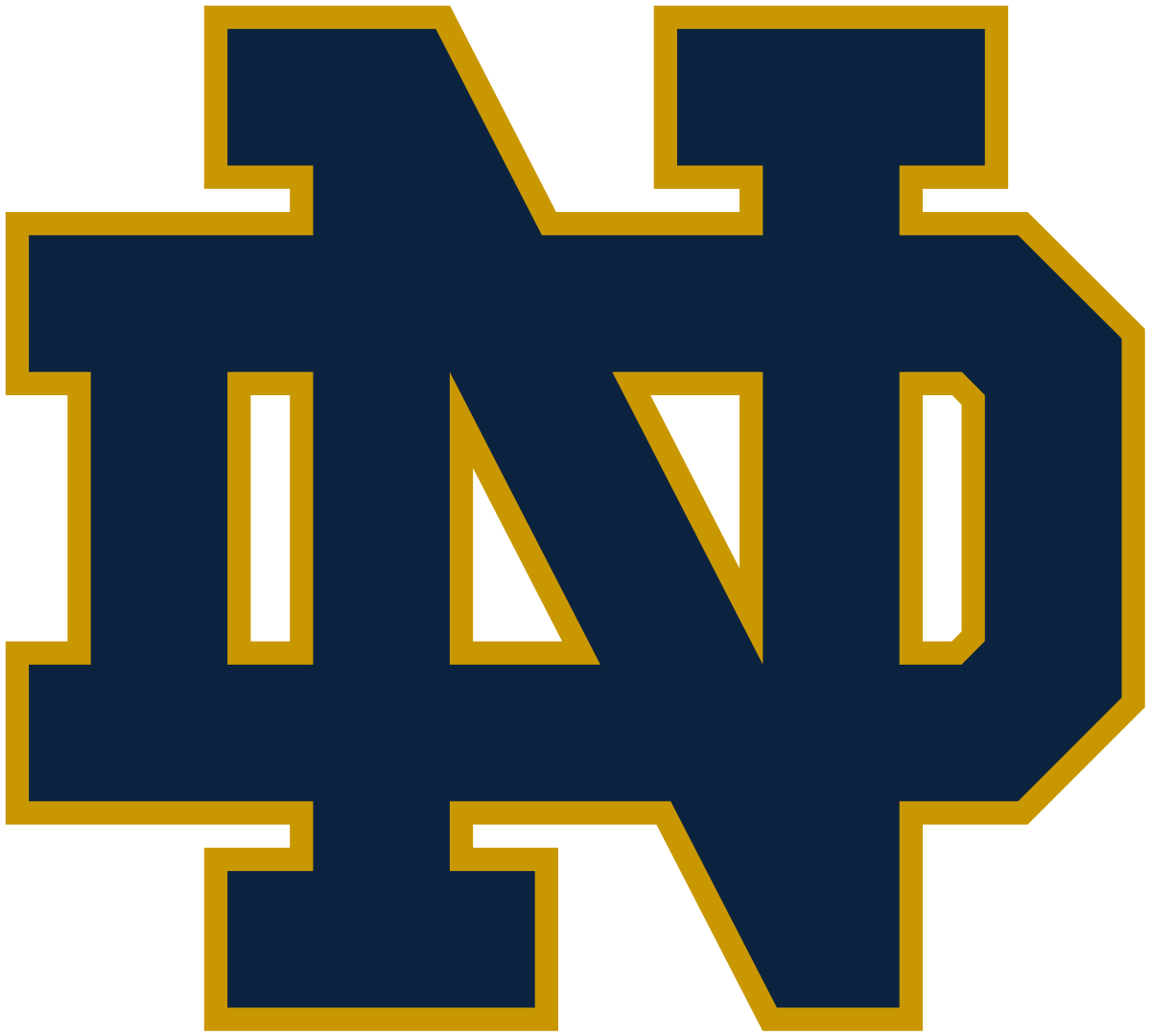
University of Notre Dame
- Notre Dame, IN
Academic Highlights: 75 majors are offered across six undergraduate colleges: the School of Architecture, the College of Arts and Letters, the Mendoza School of Business (one of the country’s best business schools), the College of Engineering, the Keough School of Global Affairs, and the College of Science. In 2022, the most degrees were conferred in business (20%), the social sciences (18%), engineering (12%), and biology (8%). A solid 60% of courses enroll fewer than 20 students, and 15% have single-digit numbers. 75% of Notre Dame undergrads study abroad.
Professional Outcomes: 69% of 2022 grads directly entered the world of employment, with the most common industries being financial services (21%), consulting (17%), technology (12%), and health services (9%). Massive numbers of alumni can be found at Deloitte, EY, PwC, IBM, Accenture, Booz Allen Hamilton, Google, Microsoft, Amazon, Goldman Sachs, JPMorgan, and McKinsey & Co. The median early-career salary was $76,000. Of the 20% of grads who went directly into their graduate/professional studies, 18% were pursuing medical degrees and 9% were studying law.
- Enrollment: 8,971 (undergraduate); 4,134 (graduate)
- Cost of Attendance: $86,125
- Median SAT: 1500
- Median ACT: 34
- Acceptance Rate: 13%
- Retention Rate: 97%
- Graduation Rate: 96%

Vassar College
- Poughkeepsie, NY
Academic Highlights: Vassar students have the choice of 50 majors and only three foundational curricular mandates, which means that there is plenty of room to explore electives and intellectual passions. A 7:1 student-to-faculty ratio leads to an average class size of 17 students, and 23% of all sections have an enrollment of nine or fewer. Professors are extremely available outside the classroom. The most popular majors are in the social sciences, biology, the visual and performing arts, foreign languages, and psychology.
Professional Outcomes: 93% of alums enjoy positive outcomes within six months of graduation, with 20% enrolling directly in a graduate or professional degree program. A solid number land at competitive companies like Google, Meta, EY, Deloitte, Microsoft, Citi, and Amazon. Elite universities such as Harvard, Penn, NYU, and Columbia are also among the top employers of former students, many of whom earn advanced degrees and enter academia. The school is one of the top 15 PhD producers.
- Enrollment: 2,459
- Cost of Attendance: $85,220
- Median SAT: 1480
- Median ACT: 33
- Acceptance Rate: 19%
- Retention Rate: 94%
- Graduation Rate: 92%

Amherst College
- Amherst, MA
Academic Highlights: A 7:1 student-to-faculty ratio allows for 66% of courses to have fewer than twenty students and 32% to have single-digit enrollments. By senior year, 98% of seniors report feeling close enough to a faculty member to ask for a letter of recommendation. Amherst possesses strong offerings across the board, most notably in economics, English, history, mathematics, and law The social sciences account for 22% of degrees conferred, while 14% are in mathematics, 11% in biology, and 7% in computer science
Professional Outcomes: Six months after graduation, 93% of the Class of 2022 had already found its way into the world of employment, graduate school, or a volunteer organization. The largest employers of Amherst grads includes Google, Deloitte, Morgan Stanley, and Goldman Sachs. The schools where the highest number of Amherst grads can be found pursuing advanced degrees include MIT, Dartmouth, and the University of Pennsylvania. Fifty to sixty Amherst grads apply to medical school each year, and the acceptance rate hovers around 75-80%.
- Enrollment: 1,898
- Cost of Attendance: $84,840
- Median SAT: 1520
- Median ACT: 34
- Acceptance Rate: 7%
- Retention Rate: 95%
- Graduation Rate: 92%

Washington and Lee University
- Lexington, VA
Academic Highlights: The university offers 36 majors and 29 minors. With an exceptionally low 7:1 student-to-faculty ratio, over 80% of class sections contain 19 or fewer students. Instructors earn rave reviews. The renowned Williams School of Commerce, Politics, and Economics offers outstanding programs, as do the Journalism and Mass Communication, English, and History Departments. Altogether, business accounts for 23% of the degrees conferred; the social sciences (25%), biology (9%), and foreign language (6%) are also popular.
Professional Outcomes: Last year, 69% of recent graduates found employment within six months of leaving Lexington; the most frequently entered industries were financial services, economics/finance, education, consulting, and real estate. Companies presently employing more than two dozen Generals including EY, Wells Fargo, Goldman Sachs, PwC, JPMorgan, Capital One, and Morgan Stanley. Starting salaries are solid with the majority of the cohort being paid $55,000 or more while 18% brought home in excess of $75,000.
- Enrollment: 1,867 (undergraduate); 376 (graduate)
- Cost of Attendance: $87,000
- Median SAT: 1480
- Median ACT: 34
- Acceptance Rate: 17%
- Retention Rate: 97%
- Graduation Rate: 94%

Harvey Mudd College
- Claremont, CA
Academic Highlights: While 62% of courses have an enrollment under 20, another 32% enroll between 20 and 39 students. Regardless, Mudd prides itself on offering graduate-level research opportunities and experiential learning to all undergrads. Only six majors are offered: biology, chemistry, computer science, engineering, mathematics, and physics. All are incredibly strong. Students also have the option to combine certain disciplines into what amounts to a double major.
Professional Outcomes: Seventy-two percent of the Class of 2022 planned on entering a job right after receiving their bachelor’s degree. The highest number of recent Harvey Mudd graduates are scooped up by the following companies (in order of representation): Meta, Microsoft, and Caltech. Graduates average an impressive $117,500 starting salary, a phenomenal number even when accounting for the preponderance of STEM majors. Many Harvey Mudd grads—20% in 2022—go directly into graduate school programs.
- Enrollment: 906
- Cost of Attendance: $89,115
- Median SAT: 1530
- Median ACT: 35
- Acceptance Rate: 13%
- Retention Rate: 97%
- Graduation Rate: 92%
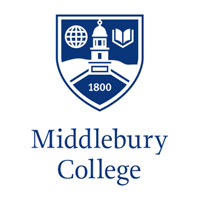
Middlebury College
- Middlebury, VT
Academic Highlights: Midd offers 50 departments and programs in which to major and minor. The school’s 9:1 student-faculty ratio allows 100% of courses to be taught by professors, not graduate assistants. Most classes are small; the mean class size is 16, and 14% of sections contain fewer than ten students. Middlebury is renowned for its Language Department as well as its programs in economics and international studies. The college has a robust international program (75 programs in 40 countries); over 50% of juniors take a semester abroad.
Professional Outcomes: Six months after graduating, 81% of the Class of 2022 had landed jobs and 12% were in graduate school. The most commonly held jobs fell under the categories of financial services (19%), consulting (14%), science and healthcare (14%), and media and technology (12%). Many Middlebury grads now enter tech-related fields; Google and Facebook are two of the leading employers alongside Morgan Stanley, Goldman Sachs, Deloitte, Amazon, and JP Morgan. More than 100 alumni work in the US State Department.
- Enrollment: 2,773 (undergraduate); 70 (graduate)
- Cost of Attendance: $89,850
- Median SAT: 1460
- Median ACT: 33
- Acceptance Rate: 13%
- Retention Rate: 95%
- Graduation Rate: 94%

Wesleyan University
- Middletown, CT
Academic Highlights: With 45 majors and 32 minors, Wes truly has something for everyone. The academic requirements are relatively minimal, giving undergrads a high degree of intellectual freedom. Under 75% of class sections have fewer than twenty students; students rave about the accessible faculty. Research opportunities with professors are plentiful. Offerings in economics, English, film studies, and neuroscience typically receive the most praise from employers/grad schools; accordingly, the social sciences (24%), psychology (17%), and the visual and performing arts (12%) are the most popular.
Professional Outcomes: Within six months of graduating, 66% of 2022 grads had entered employment, with tech/engineering/sciences, education, and arts/entertainment being the three top sectors. The companies employing the highest numbers of recent Wesleyan grads included Google, Epic, Analysis Group, Boston Medical Center, Booz Allen Hamilton, Accenture, and Apple. Graduate school was the next stop for 18% of new alums; enrolling institutions included MIT, Stanford, Berkeley, Yale, Harvard, Temple, and UMass.
- Enrollment: 3,069 (undergraduate); 184 (graduate)
- Cost of Attendance: $89,094
- Median SAT: 1430
- Median ACT: 32
- Acceptance Rate: 14%
- Retention Rate: 95%
- Graduation Rate: 93%

Wake Forest University
- Winston-Salem, NC
Academic Highlights: All freshmen enter the Undergraduate College, which offers 45 majors and 60 minors. Sporting a student-to-faculty ratio of 10:1, classes are kept on the small side with 59% of sections enrolling fewer than 20 students. 60% of students engage in hands-on research for academic credit. Wake Forest is strong across myriad disciplines, most notably chemistry, communication, accounting, finance, and international affairs. The most frequently conferred degrees are in business (22%), the social sciences (20%), journalism (8%), and biology (8%).
Professional Outcomes: Within six months of graduation, 97% of the Class of 2022 had found their next destination, with 71% starting their first professional job and 26% matriculating into a graduate program. Management/consulting, investment banking, and healthcare were the top three industries. Employers landing the highest numbers of alumni included national and multinational corporations IBM, Siemens, Volvo, Goldman Sachs, Disney, Deloitte, Dell, Gucci, PepsiCo, EY, and Nike. By the start of mid-career, Wake Forest alumni earn the second-highest median salary of any school in North Carolina.
- Enrollment: 5,447 (undergraduate); 3,516 (graduate)
- Cost of Attendance: $87,622
- Median SAT: 1450
- Median ACT: 33
- Acceptance Rate: 21%
- Retention Rate: 94%
- Graduation Rate: 90%

University of California, Davis
- Davis, CA
Academic Highlights: UC Davis offers 100+ undergraduate majors across four schools: the College of Agricultural and Environmental Sciences, the College of Biological Sciences, the College of Engineering, and the College of Letters and Science. 50% engage in some type of research/creative project outside the classroom. The areas of study with the largest number of degrees awarded were biology, the social sciences, psychology, and engineering. Programs in engineering, computer science, and animal science are nationally renowned.
Professional Outcomes: Many recent grads found homes at Silicon Valley or other California-based employers. Corporations employing 200 or more Aggies include Genentech, Google, Apple, Cisco, Meta, Oracle, Amazon, Microsoft, Salesforce, and LinkedIn. Ten years out of school, median earnings rise to $112k. Within one year of graduating, 39% of Aggies elect to continue their education; the most popular degrees pursued are master’s, MDs or other health doctorates, law, and MBA/MPA.
- Enrollment: 31,797 (undergraduate); 9,053 (graduate)
- Cost of Attendance: $41,389 (in-state); $73,963 (out-of-state)
- Median SAT: Test Blind
- Median ACT: Test Blind
- Acceptance Rate: 42%
- Retention Rate: 93%
- Graduation Rate: 87%

Scripps College
- Claremont, CA
Academic Highlights: There are 65+ majors available to undergrads, including some that are accessible through membership in the Consortium. A 10:1 student-to-faculty ratio breeds an intimate learning atmosphere where professors are genuinely dedicated to undergraduate education. The top five areas of concentration are the social sciences (18%), biology (14%), natural resources/conservation (8%), psychology (7%), and area, ethnic, and gender studies (6%). Each possesses a very strong reputation.
Professional Outcomes: Scripps women land jobs at some of the world’s leading companies after receiving their diplomas. Top employers include Google, Kaiser Permanente, and Amazon. Many go on to work for universities, including Pomona, Scripps, Stanford, UCLA, and UC San Diego. Recent grads also have entered positions at BlackRock, CBS, Goldman Sachs, Meta, and Pfizer. Over 66% complete a graduate/professional program within five years of receiving their bachelor’s degrees at institutions such as Caltech, Harvard, MIT, Vanderbilt, Oxford, Brown, Northwestern, and Tufts.
- Enrollment: 1,081 (undergraduate); 19 (graduate)
- Cost of Attendance: $87,564
- Median SAT: 1460
- Median ACT: 33
- Acceptance Rate: 30%
- Retention Rate: 91%
- Graduation Rate: 84%

Brandeis University
- Waltham, MA
Academic Highlights: Brandeis offers 43 majors, the most popular of which are in the social sciences (18%), biology (17%), business (10%), psychology (8%), public administration (8%), and computer science (7%). The student-faculty ratio is 11:1, and 60% of courses contain nineteen or fewer students. Departments with a particularly strong national reputation include economics, international studies, and sociology as well as all of the traditional premed pathways including biology, and chemistry.
Professional Outcomes: Within six months of graduation, 98% of the Class of 2022 had found their way to employment (59%), graduate school (35%), or another full-time activity like travel or volunteer work (4%). Members of the Class of 2022 were hired by Red Hat, Deloitte, Nasdaq, NPR, and McKinsey & Company. The average starting salary for recent grads is $61k. A large contingent of grads elects to continue at Brandeis for graduate school. Many others go to BU, Columbia, Duke, Harvard, and Yale.
- Enrollment: 3,687
- Cost of Attendance: $86,242
- Median SAT: 1440
- Median ACT: 33
- Acceptance Rate: 39%
- Retention Rate: 91%
- Graduation Rate: 87%
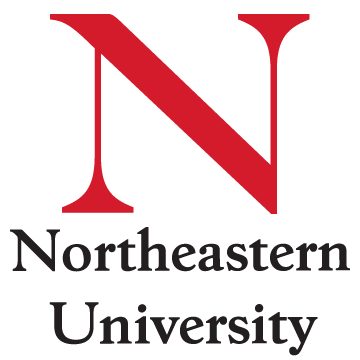
Northeastern University
- Boston, MA
Academic Highlights: Northeastern offers 290 majors and 180 combined majors within nine colleges and programs. Experiential learning is had by virtually all graduates, thanks to the school’s illustrious and robust co-op program. The D’Amore-McKim School of Business is a top-ranked school and offers one of the best international business programs anywhere, and both the College of Engineering and College of Computer Science are highly respected as well. Criminal justice, architecture, and nursing are three other majors that rate near the top nationally.
Professional Outcomes: Nine months after leaving Northeastern, 97% of students have landed at their next employment or graduate school destination. Huskies entering the job market are quickly rounded up by the likes of State Street, Fidelity Investments, IBM, and Amazon, all of whom employ 500+ Northeastern alums. Between 200 and 500 employees at Wayfair, Google, Amazon, Oracle, IBM, and Apple have an NU lineage. Starting salaries are above average (55% make more than $60k), in part due to the stellar co-op program.
- Enrollment: 20,980 (undergraduate); 15,826 (graduate)
- Cost of Attendance: $86,821
- Median SAT: 1500
- Median ACT: 34
- Acceptance Rate: 7%
- Retention Rate: 97%
- Graduation Rate: 91%
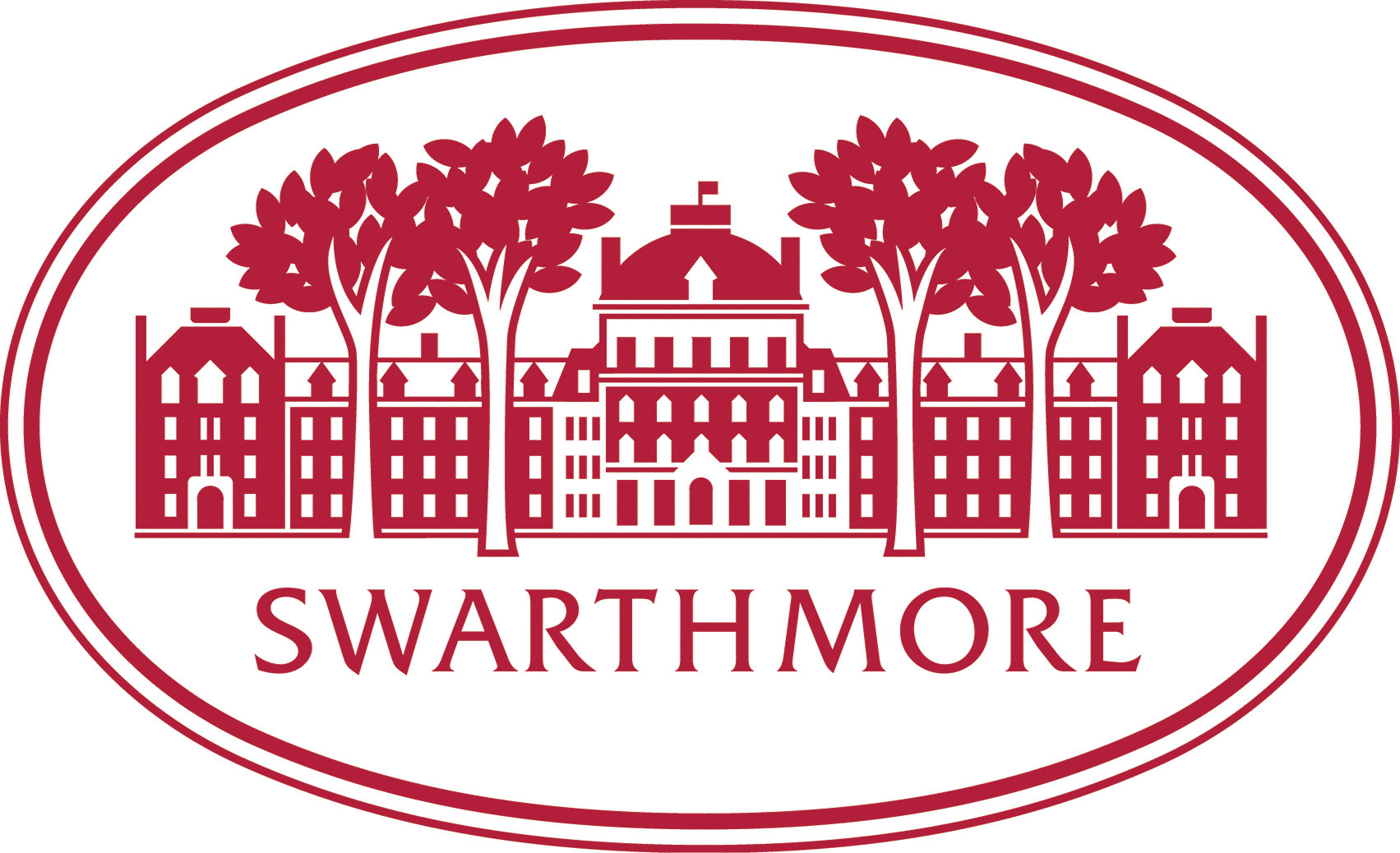
Swarthmore College
- Swarthmore, PA
Academic Highlights: Swarthmore offers forty undergraduate programs and runs 600+ courses each academic year. Small, seminar-style courses are the norm—an outstanding 33% of sections enroll fewer than ten students, and 70% contain a maximum of nineteen students. Social science degrees are the most commonly conferred, accounting for 24% of all 2022 graduates. Future businessmen/women, engineers, and techies are also well-positioned, given Swat’s incredibly strong offerings in economics, engineering, and computer science.
Professional Outcomes: 68% of Class of 2022 grads entered the workforce shortly after graduation. Popular industries included education (17%), consulting (16%), and financial services (13%); the median starting salary was $60,000. Google is a leading employer of Swarthmore grads followed by Amazon, Goldman Sachs, IBM, and a number of the top universities. 18% of 2022 grads pursued advanced degrees, with 35% pursuing a PhD, 35% entering master’s programs, 10% heading to law school, and 7% matriculating into medical school.
- Enrollment: 1,625
- Cost of Attendance: $81,376
- Median SAT: 1500
- Median ACT: 33
- Acceptance Rate: 7%
- Retention Rate: 96%
- Graduation Rate: 94%

Wellesley College
- Wellesley, MA
Academic Highlights: There are 50+ departmental and interdisciplinary majors. Thirty-six percent of course sections have single-digit enrollments while 77% have 19 or fewer students. In addition, opportunities for participation in research with faculty members abound. Most programs possess sterling reputations, including chemistry, computer science, neuroscience, and political science, but the Department of Economics shines most brightly, leading many into PhD programs and high-profile careers. Economics, biology, and computer science are the most frequently conferred degrees.
Professional Outcomes: Six months after graduating, 97% of the Class of 2022 had achieved positive outcomes. Of the 76% of grads who were employed, 24% were working in the finance/consulting/business fields, 17% in education, 17% in internet and technology & engineering, and 15% in healthcare/life sciences. Top employers included JPMorgan Chase, Google, Boston Children’s Hospital, and Goldman Sachs. The average starting salary for one recent cohort was a solid $63k. Of the 20% of 2022 grads who directly entered an advanced degree program, common schools attended included Harvard, Columbia, Brown, Stanford, MIT, and Emory.
- Enrollment: 2,447
- Cost of Attendance: $84,240
- Median SAT: 1490
- Median ACT: 34
- Acceptance Rate: 14%
- Retention Rate: 95%
- Graduation Rate: 90%

University of Richmond
- Richmond, VA
Academic Highlights: There are over sixty undergraduate majors and many standout programs, including the one-of-a-kind Jepson School of Leadership Studies and the highly regarded Robbins School of Business, which grants 37% of degrees conferred by the university. The international relations, political science, and history departments as well as pre-professional pathways have excellent reputations. 21% of classes have single-digit enrollment, 76% of sections contain fewer than 20 students, and 50% of students participate in an intensive research experience with a faculty member.
Professional Outcomes: One year after graduation, 96% of Richmond grads who were seeking employment had found jobs, with an average salary range of $55,000-$59,000. The most popular sectors were financial services/insurance (17%), accounting (7%), consulting (6%), healthcare (6%), teaching (6%), and sales/business development (6%). Companies where you can find at least 50 Richmond alumni employed include Capital One, Deloitte, PwC, Wells Fargo, EY, Dominion Energy, and Morgan Stanley. 25% of recent alumni chose to enroll directly in a graduate or professional degree program.
- Enrollment: 3,054 (undergraduate); 722 (graduate)
- Cost of Attendance: $84,930
- Median SAT: 1460
- Median ACT: 33
- Acceptance Rate: 23%
- Retention Rate: 93%
- Graduation Rate: 88%

Hamilton College
- Clinton, NY
Academic Highlights: The student-to-faculty ratio is 9:1, and without any pesky graduate students to get in the way, face time with professors is a regular occurrence. In fact, 28% of all classes have nine or fewer students; 72% have nineteen or fewer. Economics, government, and biology are among the strongest and most popular majors; other standout programs include public policy, mathematics, and environmental studies. Thirty percent of students earn social science degrees, with biology (13%), visual and performing arts (9%), physical science (7%), and foreign languages (7%) next in line.
Professional Outcomes: Examining the 491 graduates in Hamilton’s Class of 2022, an enviable 97% wasted no time landing jobs, graduate school acceptances, or fellowships. The most commonly entered industries were finance (17%), education (13%), business (12%), and science/tech (11%). Only 17% of 2022 graduates went directly into an advanced degree program. In one recent year, 33% of Hamilton grads were studying a STEM field, 22% were in the social sciences, 17% pursued a health care degree, and 5% went to law school.
- Enrollment: 2,075
- Cost of Attendance: $82,430
- Median SAT: 1490
- Median ACT: 34
- Acceptance Rate: 12%
- Retention Rate: 95%
- Graduation Rate: 92%

New York University
- New York, NY
Academic Highlights: NYU is divided into a number of smaller (but still quite large) colleges organized by discipline; in sum, there are 230 areas of undergraduate study across nine schools and colleges. For its size, a commendable 58% of classes have an enrollment under 20 students. While all schools within NYU have solid reputations, Stern holds the distinction as one of the top undergraduate business programs in the country. For those entering film, dance, drama, or other performing arts, Tisch is as prestigious a place as you can find to study.
Professional Outcomes: Within six months of exiting, 94% of Class of 2022 grads had landed at their next destination, with 78% employed and 21% in graduate school. The top industries for employment were healthcare (11%), internet and software (9%), finance (8%), and entertainment (8%). Large numbers of alumni can be found at Google, Deloitte, Morgan Stanley, Goldman Sachs, IBM, JP Morgan Chase, Citi, and Amazon. The mean starting salary is $75,336. In 2022, business, arts and sciences, and law school were the most popular grad school destinations.
- Enrollment: 29,401 (undergraduate); 29,711 (graduate)
- Cost of Attendance: $90,222-$96,172
- Median SAT: 1520
- Median ACT: 34
- Acceptance Rate: 12%
- Retention Rate: 95%
- Graduation Rate: 87%

Boston College
- Chestnut Hill, MA
Academic Highlights: The college offers roughly 60 majors across four schools that award undergraduate degrees. Approximately half of the college’s sections contain nineteen or fewer students. 95% of graduates reported learning how to think critically at BC, and 93% said they learned how to write clearly and effectively. BC offers highly respected programs in communications, psychology, and business through the renowned Carroll School of Management. Other popular and well-regarded majors include economics, biology, and chemistry.
Professional Outcomes: Within six months of graduation, 96% of the Class of 2022 had landed at their next destination. The most favored industries were financial services and real estate (26%), health care/science (20%), and business/consulting (16%). The median starting salary for a 2022 BC grad was $67,000. Eighteen percent of the Class of 2022 entered graduate schools including Brown, Columbia, the University of Chicago, and Yale. Examining the Class of 2022 data, 16% entered law school, and 14% pursued some other type of doctoral degree.
- Enrollment: 9,484
- Cost of Attendance: $86,155
- Average SAT: 1482
- Average ACT: 34
- Acceptance Rate: 17%
- Retention Rate: 95%
- Graduation Rate: 92%
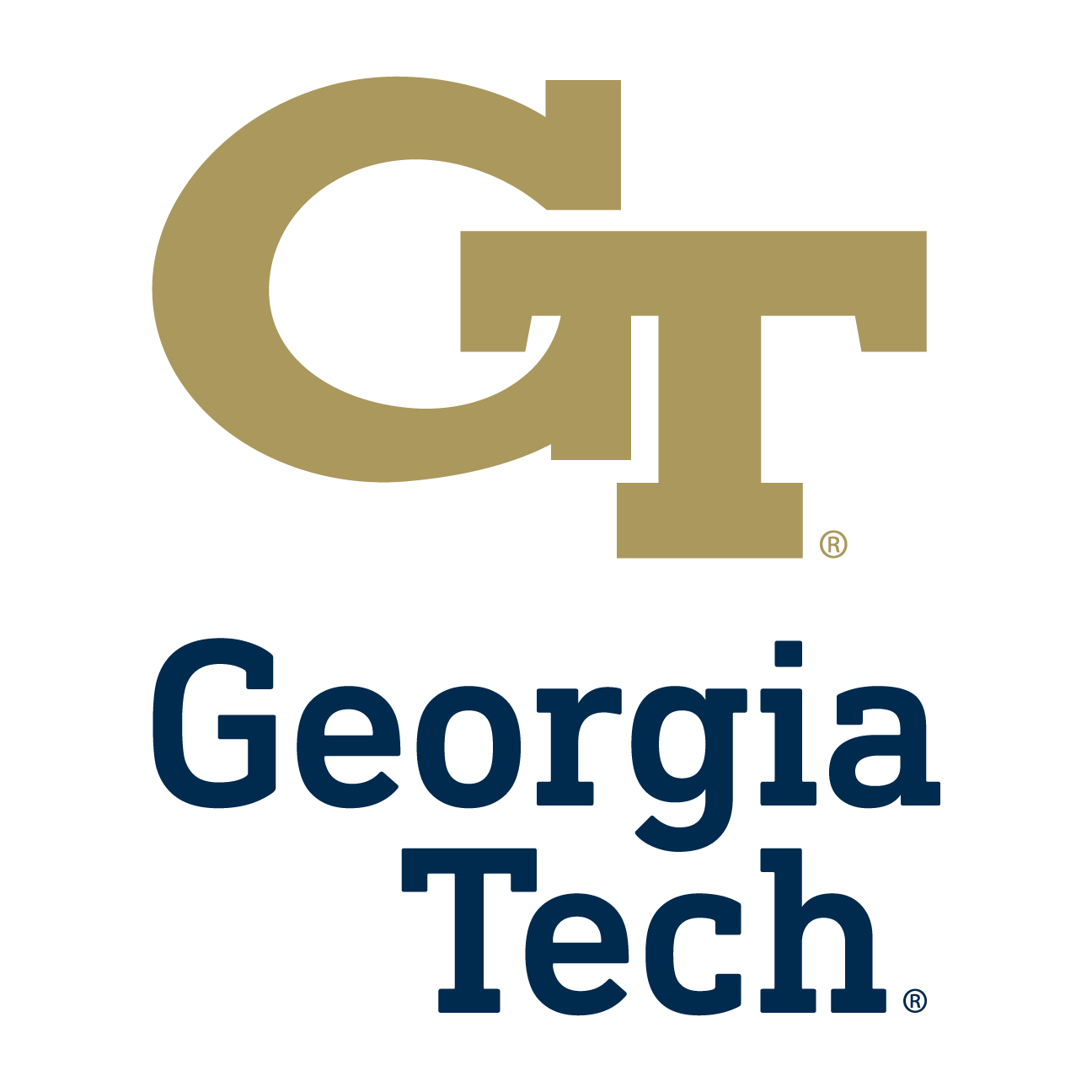
Georgia Institute of Technology
- Atlanta, GA
Academic Highlights: Georgia Tech’s engineering and computer science programs are at the top of any “best programs” list. Being a large research university, the student-to-faculty ratio is a less-than-ideal 22:1, leading to some larger undergraduate class sections. In fact, 49% of courses had enrollments of more than thirty students in 2022-23. On the other end of the spectrum, 8% of sections had single-digit enrollments. In terms of total number of degrees conferred, the most popular areas of study are engineering (51%), computer science (21%), and business (9%).
Professional Outcomes: More than three-quarters of recent grads had already procured employment by the time they were handed their diplomas. You will find graduates at every major technology company in the world. The median salary reported by that group was $80,000. Many remain on campus to earn advanced engineering degrees through Georgia Tech, but the school’s reputation is such that gaining admission into other top programs including MIT, Carnegie Mellon, Berkeley, Stanford, and Caltech.
- Enrollment: 18,416
- Cost of Attendance: $29,950 (In-State); $52,120 (Out-of-State)
- Median SAT: 1470
- Median ACT: 33
- Acceptance Rate: 17%
- Retention Rate: 98%
- Graduation Rate: 93%
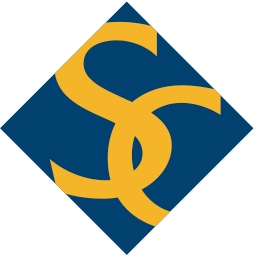
Smith College
- Northampton, MA
Academic Highlights: Smith has 50 academic departments and programs. The social sciences are most popular, accounting for 21% of the degrees conferred, with programs in economics and government carrying very strong reputations. Next in line are biology (6%), computer science (5%), English (5%), data science (5%), and engineering science (5%); more than two-fifths of current students are majoring in a STEM field. 19% of undergraduate sections have single-digit enrollments, and 69% of total class sections enroll fewer than 20 students.
Professional Outcomes: Within six months of graduating, 97% of alumnae had found employment. More than 25 alumnae can be found at the US Department of State, Google, IBM, Johnson & Johnson, Accenture, Fidelity Investments, Deloitte, Microsoft, JPMorgan Chase, and Amazon. Within two years of graduating, 40% of alumni had already entered a graduate program, and within ten years, 70% had earned or were working toward an advanced degree. Many Smith women rise to high ranks —twenty years after graduation, 18% of alumnae report holding a chief executive or other executive-level position.
- Enrollment: 2,523 (undergraduate); 350 (graduate)
- Cost of Attendance: $88,980
- Median SAT: 1440
- Median ACT: 33
- Acceptance Rate: 23%
- Retention Rate: 91%
- Graduation Rate: 89%

Georgetown University
- Washington, D.C.
Academic Highlights: The student-faculty ratio is 11:1, and 60% of classes enroll fewer than 20 students. While some classes are a bit larger, only 7% cross the 50-student threshold. Those desiring to join the world of politics or diplomacy are in the right place. The Government and International Affairs programs are among the best in the country. The greatest number of degrees are conferred in the social sciences (38%) followed by business (20%), interdisciplinary studies (8%), and biology (7%).
Professional Outcomes: Within six months of graduating, 75% of members of the Class of 2022 entered the workforce, 19% went directly into a graduate or professional program of study, and 3% were still seeking employment. The Class of 2022 sent massive numbers of graduates to a number of major corporations including JPMorgan Chase (22), Citi (21), BOA (18), Morgan Stanley (16), and EY (10). Those attending grad school stay at Georgetown or flock to other elite schools like Columbia and Harvard.
- Enrollment: 7,900
- Cost of Attendance: $85,000
- Median SAT: 1500
- Median ACT: 34
- Acceptance Rate: 12%
- Retention Rate: 97%
- Graduation Rate: 96%
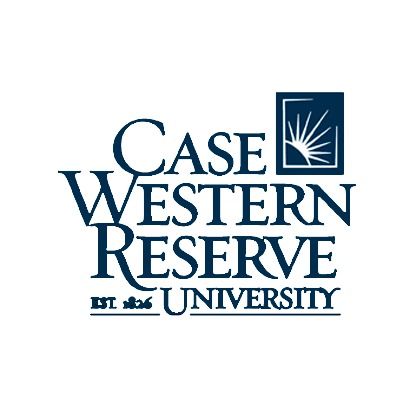
Case Western Reserve University
- Cleveland, OH
Academic Highlights: Sporting a 9:1 faculty-to-student ratio, the university does a nice job keeping classes on the small side, with 50% of course sections capped at nineteen and only 13% of courses having fifty students or more. The Weatherhead School of Management and the Case School of Engineering have stellar reputations within the worlds of employment and academia. Engineering is the most commonly conferred undergraduate degree at 27% followed by biology (15%), computer science (10%), and health professions (8%).
Professional Outcomes: Fifty-six percent of 2022 CWRU graduates head into the world of professional employment upon receiving their diplomas; only 3% were still looking for work six months after leaving the university. More than half of the Class of 2022 enjoyed a starting salary of at least $65,000. The employers of the greatest number of graduates included Accenture, Microsoft, Deloitte, and Google. In 2022, four or more grads were accepted to continue their studies at the likes of NYU, Columbia University, Johns Hopkins University, WashU, and the University of Michigan.
- Enrollment: 6,017
- Cost of Attendance: $88,516
- Median SAT: 1480
- Median ACT: 33
- Acceptance Rate: 27%
- Retention Rate: 93%
- Graduation Rate: 86%

University of California, Riverside
- Riverside, CA
Academic Highlights: UC Riverside offers 80+ majors across five colleges: the Bourns College of Engineering; the College of Humanities, Arts, and Sciences; the College of Natural and Agricultural Sciences; the School of Business; and the School of Public Policy. Popularity-wise, the greatest number of degrees are conferred in the social sciences (20%), biology (18%), business (14%), psychology (10%), and engineering (7%). 22% of sections enroll fewer than 20 undergrads, and faculty-mentored research opportunities are available for everyone.
Professional Outcomes: Within one year of graduation, 54% of 2022 grads were employed and 15% were pursuing an advanced degree. The most commonly entered industries were education, business, tech, social services, the sciences, and government; the median starting salary was $61k. More than 100 alumni work for major corporations like Kaiser Permanente, Amazon, Wells Fargo, Apple, Microsoft, Meta, and EY. For those who go on to advanced degree programs, the most common disciplines pursued are education, physical/natural sciences, engineering/computer science, health professions, and arts/humanities.
- Enrollment: 22,903 (undergraduate); 3,906 (graduate)
- Cost of Attendance: $40,537 (in-state); $73,111 (out-of-state)
- Median SAT: Test Blind
- Median ACT: Test Blind
- Acceptance Rate: 70%
- Retention Rate: 87%
- Graduation Rate: 76%

Emory University
- Atlanta, GA
Academic Highlights: This midsize university offers a diverse array of majors (80+) and minors (60+), and 30% of Emory students pursue more than one area of study. Over half of Emory’s student body works directly with a faculty member on academic research and 58% of courses have class sizes of under twenty students. Ultimately, the greatest number of students go on to earn degrees in the social sciences (15%), biology (14%), business (14%), health professions (12%), and mathematics (9%).
Professional Outcomes: Shortly after graduation, 66% of 2022 grads were already employed, and 96% had arrived at their next destination. The top employers of recent Emory grads include Deloitte, Epic, ScribeAmerica, Meta, Morgan Stanley, and Cloudmed. Graduates of the Goizueta Business School found strong starting salaries with an average of $81k. In the last few years, multiple Emory grads/alums received acceptance letters from the following top law schools like Columbia, Berkeley, and Georgetown. Med school acceptances included Duke, Johns Hopkins, and Vanderbilt.
- Enrollment: 7,101
- Cost of Attendance: $83,702
- Median SAT: 1500
- Median ACT: 33
- Acceptance Rate: 11%
- Retention Rate: 95%
- Graduation Rate: 90%
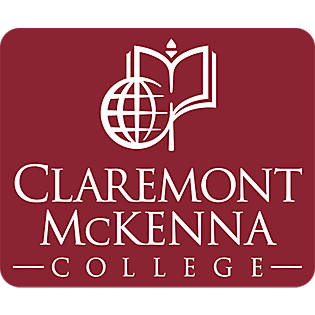
Claremont McKenna College
- Claremont, CA
Academic Highlights: CMC offers 33 majors and 11 “sequences,” series of courses that can be completed across the neighboring schools in addition to one’s major. The college boasts an average class size of eighteen, and 82% of course sections have fewer than twenty students. Economics, government, international relations, biology, and psychology are the most popular majors, and among the strongest. Interdisciplinary majors such as Environment, Economics, and Politics (EEP) and Philosophy, Politics and Economics (PPE) also carry outstanding reputations.
Professional Outcomes: Eighty-eight percent of 2022 graduates found employment within six months of graduation, and only 4% were still looking for work. The median starting salary for a 2022 Claremont grad is $87,000. You name the prestigious graduate/professional program and, chances are, a recent CMC grad (or two or three) is presently studying there. Since 2001, more than 120 alumni have enrolled at USC and UCLA. More than 60 grads have headed to UChicago, Columbia, and Stanford.
- Enrollment: 1,386
- Cost of Attendance: $86,500
- Median SAT: 1500
- Median ACT: 34
- Acceptance Rate: 10%
- Retention Rate: 96%
- Graduation Rate: 91%

DePauw University
- Greencastle, IN
Academic Highlights: No matter which of the 40+ majors you pursue at DePauw, you will enjoy the benefits of small class sizes and face time with faculty. A 9:1 student-to-faculty ratio and the fact that only four class sections in the whole university enroll more than 29 students assures that. The greatest number of DePauw undergrads earn degrees in the social sciences (17%), biology (10%), the visual/performing arts (9%), communication/journalism (8%), and computer science (6%).
Professional Outcomes: The university’s “Gold Commitment” guarantees that all grads will land at their next destination within six months, or they will be provided with an entry-level professional opportunity or an additional tuition-free semester. Top employers of DePauw grads include Eli Lilly and Company, IBM, Northern Trust Corporation, AT&T, and Procter & Gamble. Tigers applying to graduate and professional schools experience high levels of success. Of medical school applicants who earned a 3.6 GPA and scored in the 80th percentile on the MCAT, 90% are accepted to at least one institution.
- Enrollment: 1,752
- Cost of Attendance: $74,400
- Median SAT: 1260
- Median ACT: 28
- Acceptance Rate: 66%
- Retention Rate: 92%
- Graduation Rate: 79%
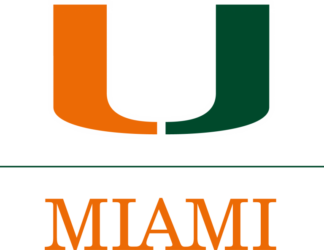
University of Miami
- Coral Gables, FL
Academic Highlights: Over 100 undergrad programs are offered across nine schools, with the greatest number of degrees conferred in business/marketing (21%), health professions (13%), biology (11%), the social sciences (9%), communication (9%), and engineering (8%). The Miami Business School and the College of Engineering enjoy solid national reputations, and programs in music, marine science, communications, and architecture are also highly ranked. 52% of all course sections contain fewer than 20 students.
Professional Outcomes: Within six months of graduating, 98% of the Class of 2022 had positive outcomes, with 64% employed full-time and 34% in graduate school. Companies employing 2022 grads included Deloitte, Citrix, NBCUniversal, Bank of America, JPMorgan Chase, Citi, and Morgan Stanley. Across all majors, the median starting salary was an impressive $63k. 100+ Canes also can be found in the offices of Google, IBM, PwC, Apple, and Microsoft. The most frequently attended graduate school is typically Miami itself.
- Enrollment: 12,883 (undergraduate); 6,710 (graduate)
- Cost of Attendance: $93,146
- Median SAT: 1410
- Median ACT: 32
- Acceptance Rate: 19%
- Retention Rate: 92%
- Graduation Rate: 84%
We hope you have found our list of the Best Colleges for Biochemistry to be useful and informative as you continue your college search process. We also invite you to check out some of our other resources and tools including:
- AP Score Calculators
- SAT Score Calculator
- ACT Score Calculator
- Best Summer Programs
- College List Building Tool


